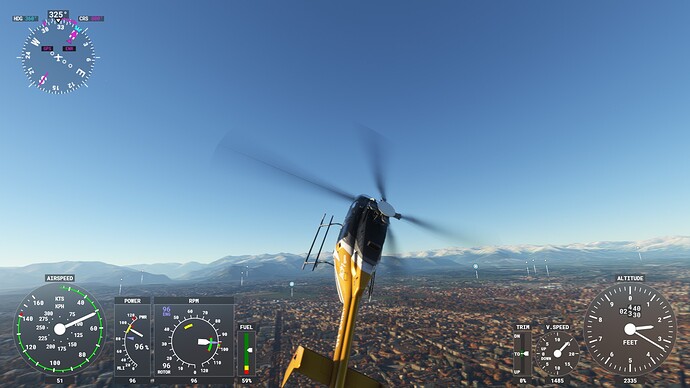![]() Thank you using the Bug section, using templates provided will greatly help the team reproducing the issue and ease the process of fixing it.
Thank you using the Bug section, using templates provided will greatly help the team reproducing the issue and ease the process of fixing it.
Are you using Developer Mode or made changes in it?
No
Have you disabled/removed all your mods and addons?
Yes
Brief description of the issue:
The “Force Trim” function was mapped to the “SET ROTOR LONGITUDINAL TRIM” axis. When trimming the helicopter forward or backward (via other Rotor Trim assignments) it moves the Rotor Trim as expected. But when the “Force Trim” button is pressed, it only resets the trim to neutral. In-flight this causes a sudden jolt because the trim has moved very quickly to the center.
Either the name of the Assignment is wrong/misleading or the function is implemented wrongly. Unless I understand the assignment wrong.
Also if the joystick axis is indeed the “Force Trim” We also expect that the cyclic animation should also be frozen while holding in the Force Trim button. So Cyclic in Model freezes while I move my joystick to a different position.
Provide Screenshot(s)/video(s) of the issue encountered:
No image available. The trim is centered when pressing the button assigned.
Detailed steps to reproduce the issue encountered:
Setup joystick as in this post: Bell 407 - #155 by BenderS92
Then trim the helicopter with the Longitudinal Rotor trim (up or down)
Press the button assigned and observe that the Trim merely centers or resets. In-flight it causes an abrupt movement (intensity is dependent on Airspeed and distance from the center)
PC specs and/or peripheral set up if relevant:
Build Version # when you first started experiencing this issue:
1.29.28.0
![]() For anyone who wants to contribute on this issue, Click on the button below to use this template:
For anyone who wants to contribute on this issue, Click on the button below to use this template:
Do you have the same issue if you follow the OP’s steps to reproduce it?
Provide extra information to complete the original description of the issue:
If relevant, provide additional screenshots/video:


